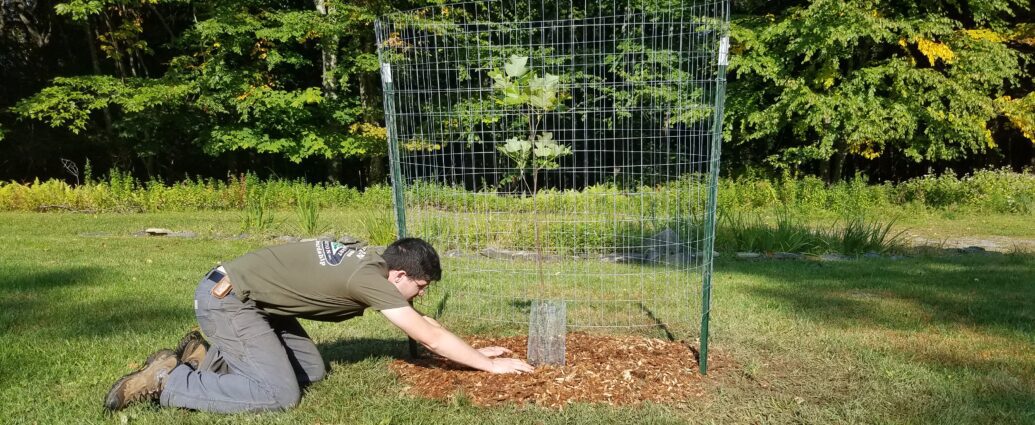
Matching a tree to its native site is a small investment that
will ensure a living legacy for future generations.
A beautiful tree grown on the perfect site is something to admire. The right tree will improve air, soil, and water quality. It will provide shelter, food, and protection for birds and mammals. A single tree may provide a break from the wind and snow, create shade to reduce energy bills, conserve a preexisting habitat, or kickstart reforestation.

Perhaps you’d like to plant hardy varieties of apple, plum, pear, or peach to begin a home orchard. Or, maybe you’d like to attract pollinators by planting flowering ornamentals such as maple, dogwood, and tulip tree. Other trees, like native mast-producing species such as oak, hickory, or mulberry are beneficial to wildlife. Long-lived native hardwoods are perfect as a tribute, memorial, or family legacy. Whatever the reason, we are here to help you choose the right tree.
How Does the Program Work?
The Legacy Tree Program is designed to help you select the best tree for your property by guiding you through preparing the site for proper planting and installation.
Site preparation occurs in spring and early summer to choose the best sites for the desired species. A rubber mat will be provided to mark the planting site and kill competing vegetation (grass, weeds, etc.) to make establishment easier.
Planting will take place in the fall. Trees will be transported and installed on the same day and provided with fencing for deer, screening for rodents and voles, and a healthy amount of mulch for the roots.
Trees will be sourced from nurseries right in the Catskills and will be chosen based on their health, growth form, and availability.
Program Goals
- Inform you on proper site selection and planting techniques to maximize the full potential of your landscape.
- Recommend varieties based on their desired function and maintenance requirements.
- Provide advice on basic pruning, harvesting (in the case of fruit trees), and maintenance of the planting site.
- Give advice on protecting trees from browsing by deer and small mammals, recovering from mechanical damage, reducing injuries from winter, and keeping trees free from pests and disease.
Site preparations are scheduled between March and June. Fall plantings are scheduled for September through October.
